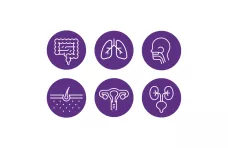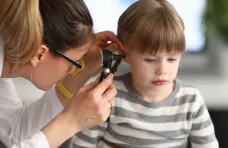Germany 2025: knowledge and behaviors about microbiota
The survey was conducted by Ipsos among 7,500 people in 11 countries (France, Portugal, Poland, Finland, Italy, Germany, United States, Mexico, Brazil China, and Vietnam).
Germans and microbiota: basic health habits in place, but microbiota education lags.
Summarizing Germany's results in the survey
In 2025, Germans show strong familiarity with the word “flora,” but far less with the concept of the microbiota itself. While healthy habits are present, they’re rarely linked to conscious microbiota care. Healthcare professionals are trusted but still largely absent from microbiota education. As for microbiota testing, it remains a little-known practice, met with caution and curiosity.
A snapshot of a country where microbiota awareness is only just beginning to take root.
1. Germany: low microbiota awareness, high “flora” recall

In 2025, Germany ranks below the global average in microbiota awareness: 37% of respondents have never heard of the term "microbiota", compared to 29% globally
Specific types remain widely unknown:
are unfamiliar with the gut microbiota
(vs 29% overall)
of Germans have heard of vaginal microbiota.
(vs 51% overall)
Other microbiotas, skin, lung, urinary, oral, and ENT, are unknown to 62–71% of respondents.
However, traditional terms remain much more familiar: 97% have heard of gut flora, and 80% of vaginal flora. In contrast, awareness of more scientific concepts is lacking, only 16% know the term dysbiosis, a key concept in understanding microbiota imbalance.

Learn all about microbiota
Learn more
2. Limited awareness, mixed habits: microbiota care not fully intentional
In 2025, 64% of Germans say they have not changed their habits to support a balanced microbiota (way higher than the global average of 44%). Yet many report generally healthy behaviors:
of Germans claim to follow a varied diet
(vs 83% overall)
said to engage in physical activity
(vs 83% overall)
declared they avoid smoking
(vs 76% overall)

Microbiota & sport: competitive micro-organisms
Find out more...However, microbiota-specific actions are less common. 73% do not consume probiotics (vs. 51% overall), and 77% avoid prebiotics (vs 59% overall).
Additionally, 50% do not limit ultra-processed foods, and 49% shower more than twice a day, a habit potentially harmful to skin microbiota.
These results show that while healthy routines exist, they are not yet connected to conscious microbiota care.

3. Healthcare professionals: trusted but largely silent on the microbiota
In Germany, healthcare professionals are seen as the most trusted source of information on the microbiota by 74% of respondents, on par with global averages (78% overall). Yet in practice, their involvement remains minimal.

Three out of four Germans have never been informed by a healthcare professional about the microbiota, its importance, or the healthy behaviors needed to support it, figures significantly higher than global averages.
The gap continues when it comes to prescription (only 21%) and antibiotic-related education: just 27% were told about the potential impact of antibiotics on the microbiota (38% globally), and only 21% received advice to reduce these effects.

Antibiotics: what impact on the microbiota and on our health?
Learn moreWith gastroenterologists (14%) and naturopaths (10%) as the main sources of professional information, the data reveals a clear mismatch: trust in the medical field is high, but concrete communication remains rare.

4. Low awareness and cautious interest in microbiota testing
In 2025, 82% of Germans have never heard of microbiota testing, a figure well above the global average of 73%. Even when introduced to the idea, only 53% say they would be willing to take such a test (vs 61% globally). Interest focuses primarily on the gut microbiota (78%), with motivations tied to:
would use it to conduct a general health check-up
(vs 60% overall)
believe this test would be useful to improving lifestyle habits
(vs 49% overall)
see it as a tool to satisfy their curiosity
(vs 23% overall)
Interestingly, Germans are more likely than average to cite personal curiosity as a reason to get tested (28% vs. 23% globally), reflecting an individual-driven rather than preventive approach.
As for contributing to science, 50% say they would be willing to donate stool samples anonymously, a moderate figure that suggests openness, but with reservations. Overall, microbiota testing remains unfamiliar territory in Germany, with cautious steps toward engagement.
What is microbiota testing and mapping?
There are different types of microbiota testing, not only for the gut. Overall, they seek to identify microorganisms, such as bacteria and fungi, living in a specific part of the body to help inform health decisions and/or outcomes.
Intestinal microbiota testing, which seems to be the most common type of analysis, generally tests a person’s stool sample. For example, they could look for illness markers or extract DNA.
Both collective and individual gut microbiota analyses start with a stool sample. Microbiota mapping aggregates results from multiple microbiota tests to advance research and fight chronic diseases. Individual tests provide personal data on gut flora, with no definition of a clinically validated “healthy” or “pathological” microbiota. Thus, mapping fuels population-level knowledge, while testing gives a snapshot of one’s own microbiota.

Gut microbiota: still many things to be discovered
Find out more...
Methodology
This third edition of the International Microbiota Observatory was conducted by Ipsos on 7,500 individuals across 11 countries (France, Portugal, Poland, Finland, Italy, Germany, the USA, Brazil, Mexico, China, and Vietnam). Two new countries were included in this edition: Italy and Germany.
The survey was conducted over the Internet between January 21 and February 28, 2025. For each country, the sample is representative of the population aged 18 and over in terms of :
- gender
- age
- profession
- region
Representativeness was ensured via quota sampling, the most commonly used sampling method for obtaining a representative sample of the population studied. The quota variables for each country were gender, age, region, and socio-professional category. The data were adjusted:
- within each country, again to ensure that each population is representative
- globally, so that each country has the same weight. Statistical analyses were carried out using Cosi software (M.L.I., France, 1994), with a significance level of 95%
The survey population was 48% male and 52% female. The average age was 43.7 years. The sample of 7,500 individuals made it possible to carry out a detailed analysis by age group:
- 18-24
- 25-34
- 35-44
- 45-59
- 60 and over
Changes from one year to the next have been measured on a like-for-like basis, i.e. calculated taking into account only those countries present in both the first and second editions of the survey. While we do have results for the new countries included in this third edition (Germany and Italy), they have not been taken into account when calculating trends, since they were not included in the first two editions of the survey.
The questionnaire includes 16 questions on:
- socio-demographic data
- the level of knowledge about microbiomes
- the level of and desire for information from healthcare professionals
- the identification and adoption of behaviors designed to combat microbiome imbalances
- the level of knowledge, information, and behaviors of women about the vulvo-vaginal microbiome
- health data
The questionnaire lasted ten minutes and the 7,500 individuals had to complete the entire questionnaire in order to be included in the survey. The terms used in the questionnaire to talk about the microbiome have been translated and adapted to the terms used in each country.


